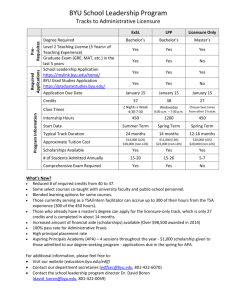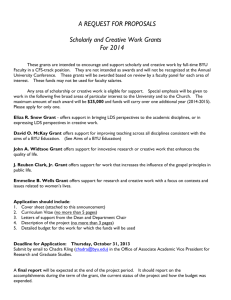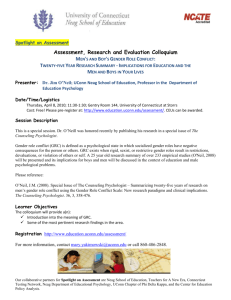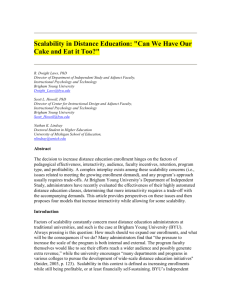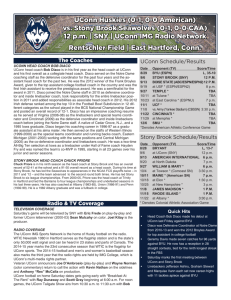21 PW CAN - University of Connecticut
advertisement
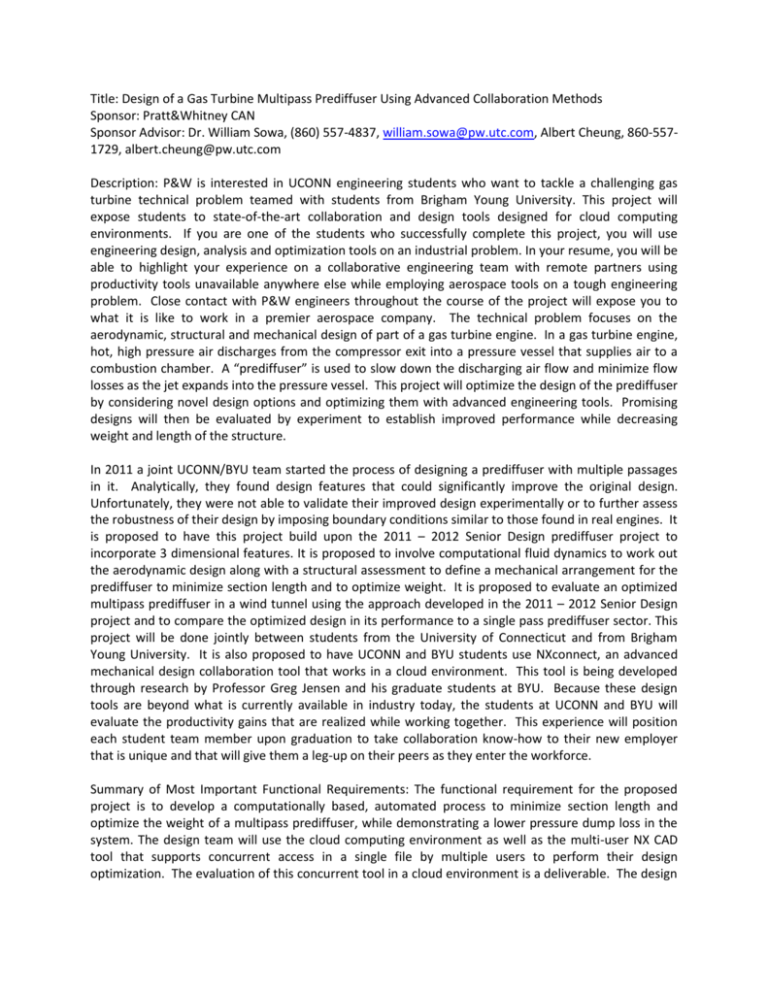
Title: Design of a Gas Turbine Multipass Prediffuser Using Advanced Collaboration Methods Sponsor: Pratt&Whitney CAN Sponsor Advisor: Dr. William Sowa, (860) 557-4837, william.sowa@pw.utc.com, Albert Cheung, 860-5571729, albert.cheung@pw.utc.com Description: P&W is interested in UCONN engineering students who want to tackle a challenging gas turbine technical problem teamed with students from Brigham Young University. This project will expose students to state-of-the-art collaboration and design tools designed for cloud computing environments. If you are one of the students who successfully complete this project, you will use engineering design, analysis and optimization tools on an industrial problem. In your resume, you will be able to highlight your experience on a collaborative engineering team with remote partners using productivity tools unavailable anywhere else while employing aerospace tools on a tough engineering problem. Close contact with P&W engineers throughout the course of the project will expose you to what it is like to work in a premier aerospace company. The technical problem focuses on the aerodynamic, structural and mechanical design of part of a gas turbine engine. In a gas turbine engine, hot, high pressure air discharges from the compressor exit into a pressure vessel that supplies air to a combustion chamber. A “prediffuser” is used to slow down the discharging air flow and minimize flow losses as the jet expands into the pressure vessel. This project will optimize the design of the prediffuser by considering novel design options and optimizing them with advanced engineering tools. Promising designs will then be evaluated by experiment to establish improved performance while decreasing weight and length of the structure. In 2011 a joint UCONN/BYU team started the process of designing a prediffuser with multiple passages in it. Analytically, they found design features that could significantly improve the original design. Unfortunately, they were not able to validate their improved design experimentally or to further assess the robustness of their design by imposing boundary conditions similar to those found in real engines. It is proposed to have this project build upon the 2011 – 2012 Senior Design prediffuser project to incorporate 3 dimensional features. It is proposed to involve computational fluid dynamics to work out the aerodynamic design along with a structural assessment to define a mechanical arrangement for the prediffuser to minimize section length and to optimize weight. It is proposed to evaluate an optimized multipass prediffuser in a wind tunnel using the approach developed in the 2011 – 2012 Senior Design project and to compare the optimized design in its performance to a single pass prediffuser sector. This project will be done jointly between students from the University of Connecticut and from Brigham Young University. It is also proposed to have UCONN and BYU students use NXconnect, an advanced mechanical design collaboration tool that works in a cloud environment. This tool is being developed through research by Professor Greg Jensen and his graduate students at BYU. Because these design tools are beyond what is currently available in industry today, the students at UCONN and BYU will evaluate the productivity gains that are realized while working together. This experience will position each student team member upon graduation to take collaboration know-how to their new employer that is unique and that will give them a leg-up on their peers as they enter the workforce. Summary of Most Important Functional Requirements: The functional requirement for the proposed project is to develop a computationally based, automated process to minimize section length and optimize the weight of a multipass prediffuser, while demonstrating a lower pressure dump loss in the system. The design team will use the cloud computing environment as well as the multi-user NX CAD tool that supports concurrent access in a single file by multiple users to perform their design optimization. The evaluation of this concurrent tool in a cloud environment is a deliverable. The design team will build an SLA or equivalent prototype of the baseline single pass design and their optimized multipass design to validate their analyses and their design process in a wind tunnel environment. What Do You Anticipate the Student Team Will Design & Build? The design team should develop an automated, validated process to optimize a gas turbine prediffuser that is collaborative across different locations. The team should build an SLA or equivalent prototype of their optimized design and demonstrate its capability in a wind tunnel. It should be compared to a baseline single pass design. This project needs to be coordinated between UCONN and BYU students. Students from both universities need to act as a single team providing a single set of reports and updates. The division of efforts between the team members at both universities needs to be developed. In the 2011-2012 effort, the work split that was followed had BYU students take the lead on parametric design and optimization and UCONN students take the lead on CFD and Structure. This is one option; however, the 2012_2013 team can organize itself differently if desired. Additional information: BYU Fall semester Aug. 27-Dec. 6; Spring semester Jan. 7- April 16.
